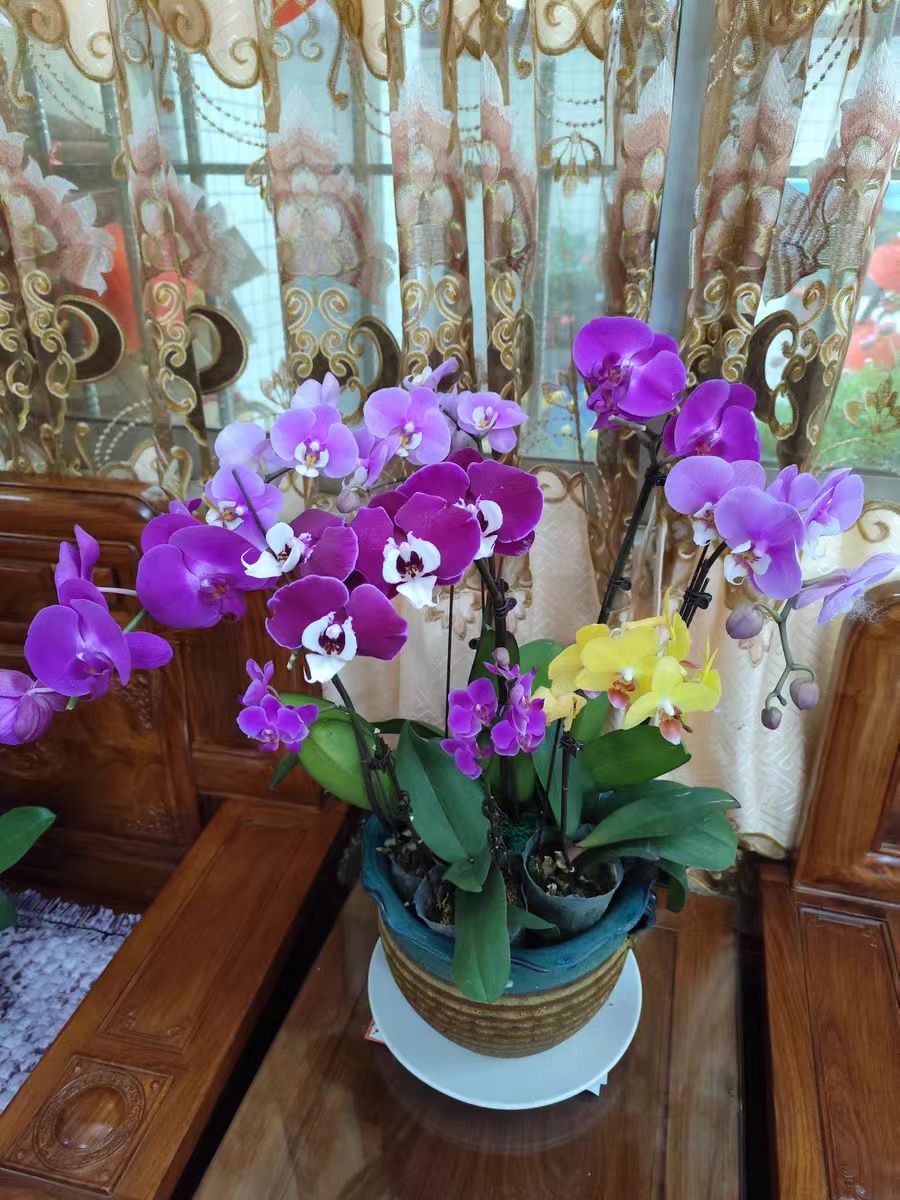Phalaenopsis orchids stand out in the world of flowers and have become a favorite among many gardening enthusiasts. However, watering is a key challenge during their maintenance—even a small mistake can affect the plant's growth. So, will Phalaenopsis leaves turn yellow if they lack water? And how can we determine whether they need watering?
Phalaenopsis have picky water requirements. During their growth period, prolonged water deficiency severely impacts water supply to the leaves, hindering photosynthesis and preventing normal nutrient synthesis. Chlorophyll, the key pigment that gives plants their green color, also requires adequate water for synthesis. Therefore, long-term water shortage reduces chlorophyll content, causing leaves to gradually lose their green hue and eventually turn yellow. It is important to note that once Phalaenopsis leaves turn yellow, it often indicates severe damage to their cellular tissues, making it difficult to remedy the situation at this point. Yellowed leaves not only affect the plant's ornamental value but can also lead to a decline in the overall health of the Phalaenopsis, and in severe cases, even cause the plant to die.
To avoid damage to Phalaenopsis due to water deficiency, it is crucial to master the correct timing for watering. Here are some practical judgment techniques:
Observe the root color: Phalaenopsis roots are typically green. When they turn white, it indicates that water needs to be replenished.
Check the surface of the sphagnum moss: Sphagnum moss is one of the common cultivation media for Phalaenopsis. When the surface of the sphagnum moss becomes dry and brittle, it means the plant is short of water.
Observe the color of the sphagnum moss in the pot: A lighter color of the sphagnum moss in the pot is also a sign of water deficiency. Under normal conditions, the sphagnum moss should maintain a certain level of moisture and color depth.
Feel the weight of the pot: Dry soil causes the pot to become lighter. By regularly lifting the pot to feel changes in its weight, you can roughly determine whether it needs watering.
Observe water vapor on the pot wall: Moist soil forms a layer of water vapor on the pot wall. If there is no water vapor on the pot wall, it indicates that the soil is dry and needs watering.
Check the root condition: Slightly shriveled roots are also a sign of water deficiency. At this point, water should be replenished in a timely manner to prevent further damage to the roots.
Observe the condition of old leaves: Slight softening of old leaves is also a sign of water deficiency in Phalaenopsis. During normal maintenance, old leaves may lose water due to drought, and then turn yellow and fall off. Therefore, it is crucial to observe and address this phenomenon in a timely manner.
In conclusion, water deficiency in Phalaenopsis can indeed cause leaves to turn yellow, and once they turn yellow, it is often difficult to remedy. Therefore, as gardening enthusiasts, we must pay attention to proper water management when cultivating Phalaenopsis. By observing indicators such as root color, sphagnum moss condition, pot weight, water vapor on the pot wall, and leaf condition, we can accurately determine whether Phalaenopsis needs watering. At the same time, comprehensive consideration of factors such as seasonal changes, water quality selection, and correct watering methods will help improve the maintenance level of Phalaenopsis.
Will Phalaenopsis leaves turn yellow due to water deficiency?

Share with
Tagged in :




Leave a Reply